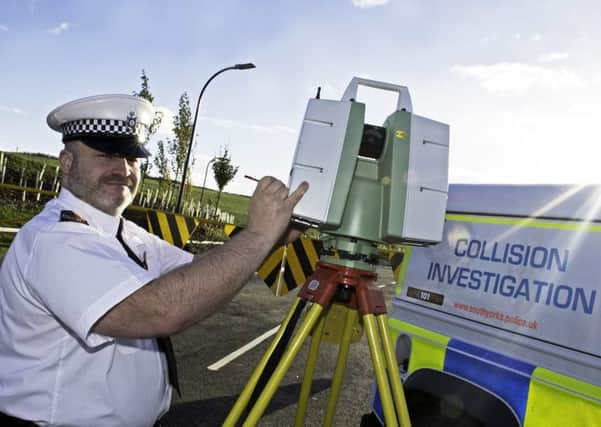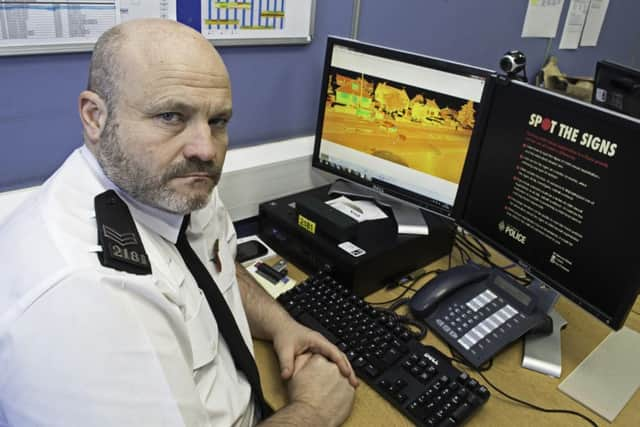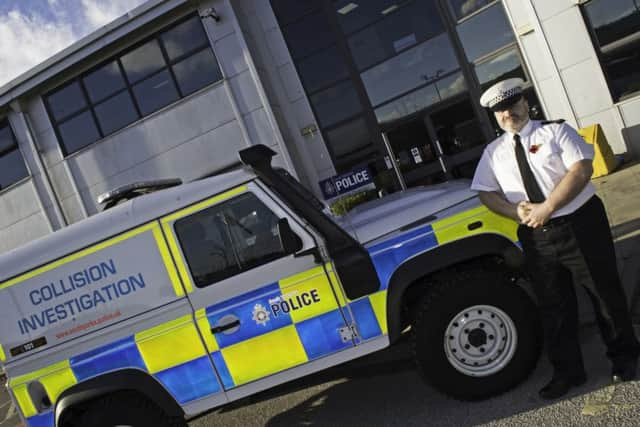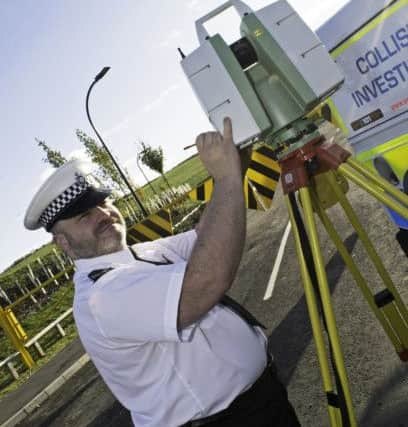Police probe 46 road deaths in and around Sheffield


Sergeant Steve Askham, of South Yorkshire Police’s serious collisions unit, has investigated hundreds of fatal and serious collisions over the years.
The unit is currently investigating 46 fatal crashes – and Sgt Askham says it is their duty to provide answers to grieving families.


Advertisement
Hide AdAdvertisement
Hide AdHe said: “There is very rarely just one cause. It is common that a number of factors come together.”
Having knocked on doors in the dead of the night to inform relatives that loved ones have died, Sgt Askham said he is committed to providing answers to help grieving families come to terms with their loss.
Some investigations lead to criminal court cases with people accused of causing death by dangerous driving. Others end up before a coroner, with no criminal blame. But in all cases families of crash victims always want answers.
“It is very very demanding to have to break the news that somebody has died and each family is different in the way they accept that – grief is very powerful and everyone reacts differently to it,” said Sgt Askham.


Advertisement
Hide AdAdvertisement
Hide Ad“Some will be overcome with emotion and others might strike out at you because you are delivering something they do not want.
“Our role after that is to find out what happened and why. The relatives left behind have a right to know that.”
So far this year, 24 drivers, passengers and pedestrians have been killed and 325 seriously injured on the county’s roads.
With each collision unique and with its own particular set of circumstances, investigations can take months, sometimes years, to complete.


Advertisement
Hide AdAdvertisement
Hide AdRewind 20 years and police would have turned up at a crash scene with a measuring tape and a chalk stick as they tried to piece together what had happened.
But today they have all the tools at their fingertips – including the latest in forensics technology – and they can examine CCTV cameras and mobile phone records.
From police officers arriving at crash scenes and dealing with the initial aftermath – which can include everything from battling to revive casualties to diverting traffic – investigations into the circumstances surrounding the collisions start immediately. Treated as crime scenes, photographs of crash sites are taken, tyre marks measured, weather and road conditions noted and vehicles examined.
Debris is painstakingly examined, with officers looking for anything which could shed some light on what might have caused a crash.


Advertisement
Hide AdAdvertisement
Hide AdOnce the cars are towed away, crash barriers are repaired and roads re-opened, the next phase of collision investigation begins.
“We accept nothing, believe nothing, challenge everything and seek corroboration,” said Sgt Askham.
Interviewing witnesses is still vital, but officers now have technology to help piece the jigsaw together.
CCTV footage can be analysed to show the way a motorist was driving before a crash and mobile phone records can be checked to establish whether a driver was making a call or texting at the time.
Advertisement
Hide AdAdvertisement
Hide AdVehicles are meticulously examined for defects, road surfaces tested, drainage systems looked at and alcohol and drug tests carried out.
Sgt Askham said motorists need to think twice about their actions or face the consequences – either with their own life or a victim’s.


“I believe that people believe modern cars can save you – they think they are safe because of all the features such as air bags and anti-skid technology but they are not,” he said.
“What has not changed is the ‘mark one’ human being behind the wheel. There is only so much we can be protected from.
Advertisement
Hide AdAdvertisement
Hide Ad“I have seen the consequences of people taking a risk, or a minor lapse of attention and those who knowingly get behind the wheel while unfit to do so.
“They may not have set out intending to kill somebody but, because of how thorough our collision investigation is, prison is a significant prospect if you are involved in the death of someone.
“Being responsible and careful and doing your utmost to comply with the rules and regulations of the roads will go a long way to preventing more road deaths.”